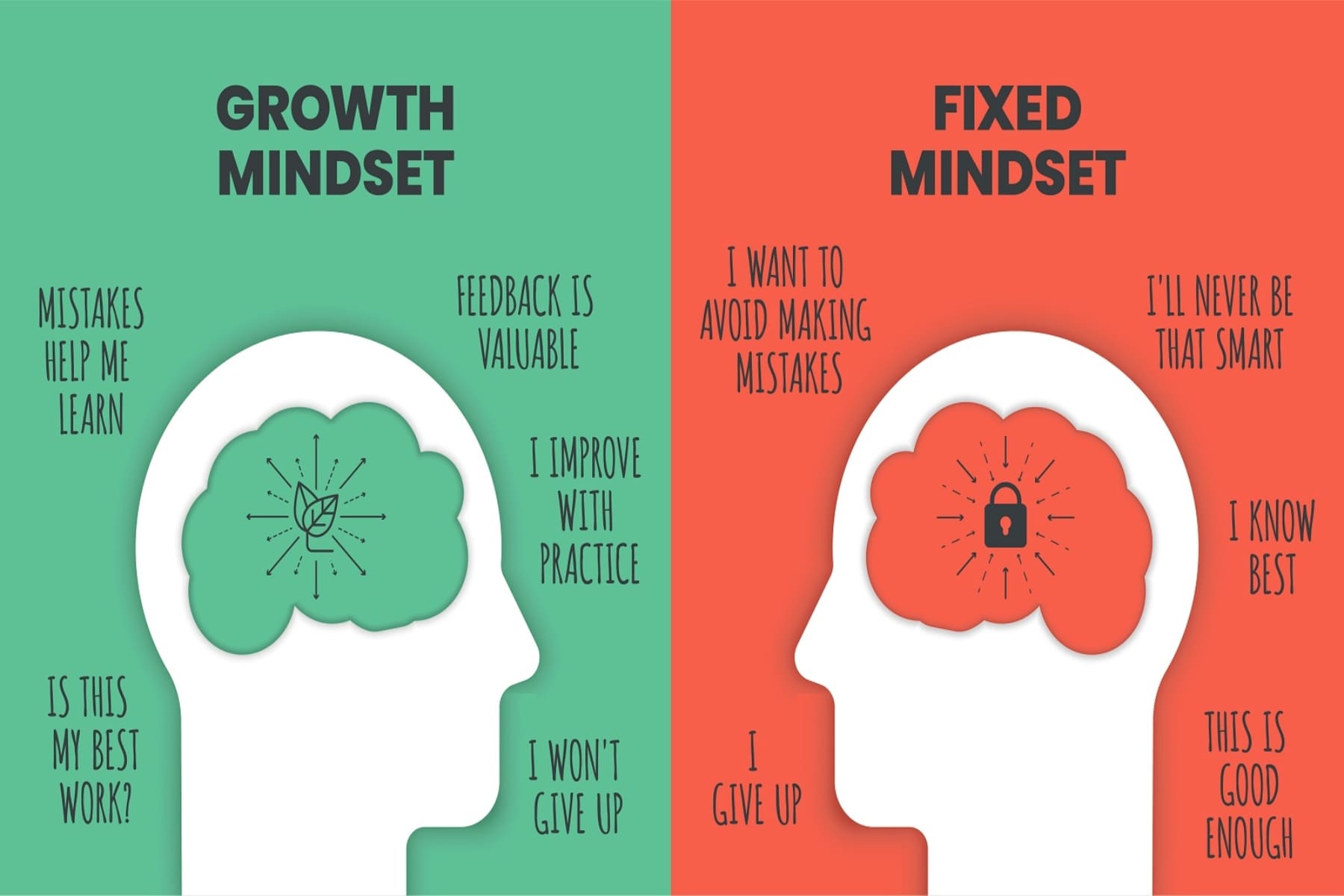“Overcoming challenges isn’t difficult—it’s just mind over matter.”
Your mindset—the beliefs that shape how you view yourself and your world—influences your thoughts, feelings, and behaviors. Mindset can mean the difference between success or failure and resilience or defeat. Your mindset is defined by several psychosocial factors: family dynamics, income, physical and mental health, socioeconomic status, religion, and more.
Mindset is a great predictor of our attitude and happiness, and there are multiple schools of thought when it comes to explaining how mindset works. Learn more about mindset frameworks, tips and tricks for shifting your mindset, and resources to help create a mindset that supports a happy, healthy life.
Discovering your Mindset Framework
Experts theorize lots of different ways that mindset shapes our lives. They influence how we respond to situations throughout life by triggering specific thoughts and feelings, which drive our behavior and reaction. Some of the most common types include:
- Growth mindset—You may think of growth versus fixed mindset in terms of “glass half full” and “glass half empty,” but it’s more than comparing optimism and pessimism. A growth mindset is the belief that ability, skills, and intelligence can improve over time with hard work and perseverance. Individuals with a growth mindset are typically open to change, solution-oriented, and view problems as learning opportunities.
- Abundance mindset—This mindset is based on the belief that there is enough of everything—love, money, friendship, success—for everyone. People receive what they need and are grateful for the things they have.
- Curiosity mindset—Individuals with a curiosity mindset have a natural urge to observe the world, learn everything they can, and discover new ways of thinking and doing. They approach the world with wonder and delight and find new thoughts and feelings fascinating.
- Solution-oriented mindset—People with this mindset focus on the solutions to a problem instead of the problem itself. They don’t wait for others to take the initiative but also have a knack for stepping back and viewing the problem from a 50,000 ft. view to find the right solution.
6 Tips for Shifting Your Mindset
Do you relate to any of the mindsets listed above? Most of us can see the benefits in at least one of these frameworks—or may recognize they currently believe the opposite. For instance, the flip side of an abundance mindset is a scarcity mindset—the belief that the world has finite resources and that when someone receives something, it leaves less for others. The other angle of a solution-oriented mindset is a problem-focused mindset in which a person focuses on the problem and its ramifications and believes there is little they can do to change it.
Identifying your mindset is your first step in shifting your mindset for success. Here are a few next steps to help you practice a positive mindset.
- Recognize that your thoughts are powerful—Many of our thoughts are almost subconscious and move so quickly that we don’t realize how they affect our mindset. If you’re feeling frustrated, stop and take note of your thoughts. Are they based on fear or scarcity? Practice reframing your thoughts from your new mindset perspective.
- Embrace change—Change is difficult for most people, yet it is inevitable and constant. Instead of thinking about what you’ve lost, think about how change can positively influence your life or pick one thing you’re grateful for because of the change.
- Face your fears—When you recognize you’re afraid of something, stop and ask yourself one question: what is the worst that can happen? In many cases, the outcome is not nearly as terrible as what’s living in your mind. Use the mantra, “Do it anyway,” and you’ll come out stronger on the other side.
- Limit technology—Social media, 24-hour news, and constant ads can wreak havoc on our subconscious by promoting scarcity, fear, and problems with seemingly no solutions. Limiting your exposure will allow you to focus more on your thoughts and reframe them to align with your new mindset.
- Practice mindfulness—Mindfulness will help you focus on the “now”—how you feel and think in the present. It will help you identify thoughts and choose gratitude for what you have.
- Set small goals—We often focus on the big goals in our lives, but the smaller ones are more influential to a positive mindset. Choose two or three small things you want to change and celebrate small wins.
- Complete CBT-based exercises — CBT, or cognitive behavioral therapy, is the process of changing your thought patterns and developing healthy coping skills for problems. CBT-based exercises, like those found through the Uprise Health Member Portal, can help you create a new mindset from the comfort of your home.
Shifting your mindset is a powerful way to bring positivity and clarity to your life. Uprise Health offers mindset courses to our members, and it’s a great way to be guided through mindset improvements. Visit your Member Portal to access our library of courses and learn more about mindset.





